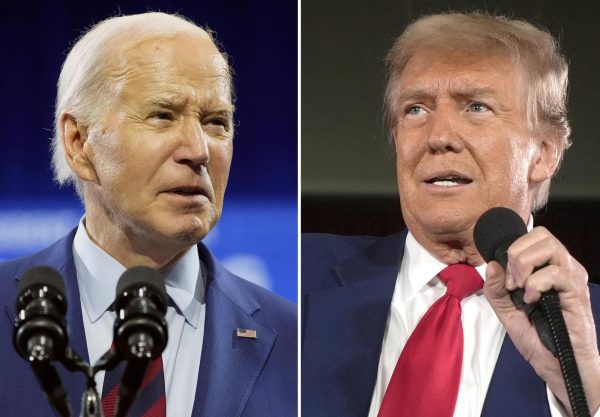First Amendment still applies today
December 2, 2012
Even baby Jesus can’t come without controversy.
For the 17th time, the Freedom From Religion Foundation (FFRF) has placed its “Natural Nativity Scene” in the first-floor rotunda in the Wisconsin State Capitol, located in Madison. This scene depicts not a Biblical nativity scene, but a pagan counterpart, one that replaces baby Jesus with a black girl, alongside Mark Twain, Charles Darwin, Albert Einstein and an angel-replacing-astronaut to boot. The message here can be understood by the sign placed next to it, part of which reads: “Religion is but myth and superstition that hardens hearts and enslaves minds.”
The FFRF is one of many organizations that claim to protect the “constitutional principle of the separation of state and church,” which can be read on the FFRF’s website.
But what is the separation of church and state, and is it constitutional?
The phrase “separation of church and state” originates from a letter Thomas Jefferson sent to the Danbury Baptists in 1802. Europe had a long history of monarchs and religious persecution, and churches in America had a reason to fear tyranny.
Jefferson, in his effort to console the church, wrote: “Adhering to this expression of the supreme will of the nation in behalf of the rights of conscience, I shall see with sincere satisfaction the progress of those sentiments which tend to restore to man all his natural rights….”
Basically, the government was not to have power over thought or religion. The point was to keep the government out of the churches; however, there is no claim to keep religion out of the government.
Yes, the First Amendment states that it won’t make a law establishing a religion within the government: “Congress shall make no law respecting an establishment of religion, or prohibiting the free exercise thereof.” However, it does not prevent the government from recognizing religion, and the phrase “separation of church and state” appears nowhere in the Constitution.
Early American history shows a track record of intermingling state and religion. One notable example: church services were held in the capitol building inside the House of Representatives until 1868, when the congregation raised money to build their own building. Thomas Jefferson, who some believe to have been for separation, was an attendant for years.
Government recognition of religion doesn’t involve forcing citizens to practice religion.
“Hanging the Ten Commandments on the wall of a county courthouse no more mandates religion than judges displaying the banner of their favorite sports team somehow equates to Congress establishing that team as preeminent,” wrote Bill Flax in a July 2011 Forbes article.
But besides the argument on Constitutionality, we should be angry that this group has decided to mar the importance the nativity scene holds for billions of people in order to make a statement. Christianity, and any other religion for that matter, should be respected and not made a mockery of.
Having religious symbols in government is not unconstitutional, so if the FFRF wants to remove a nativity scene, I’ll let them go first.













